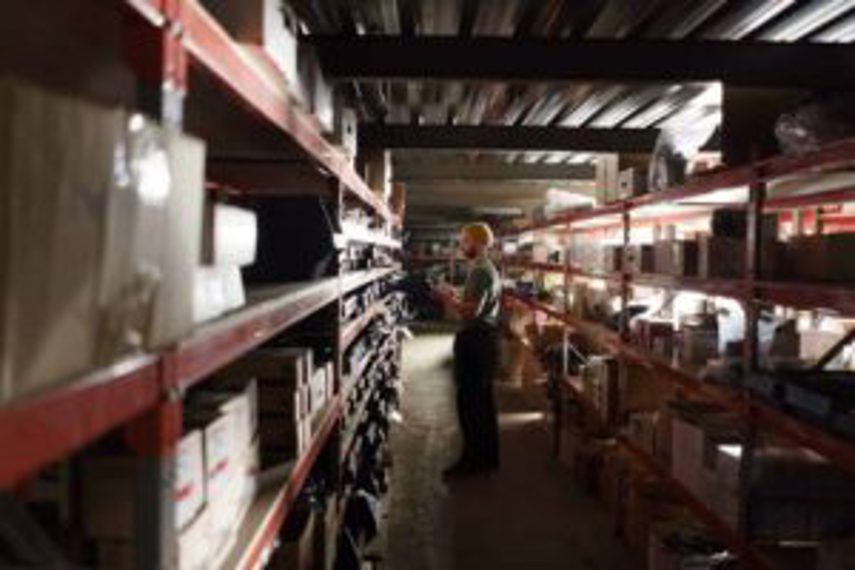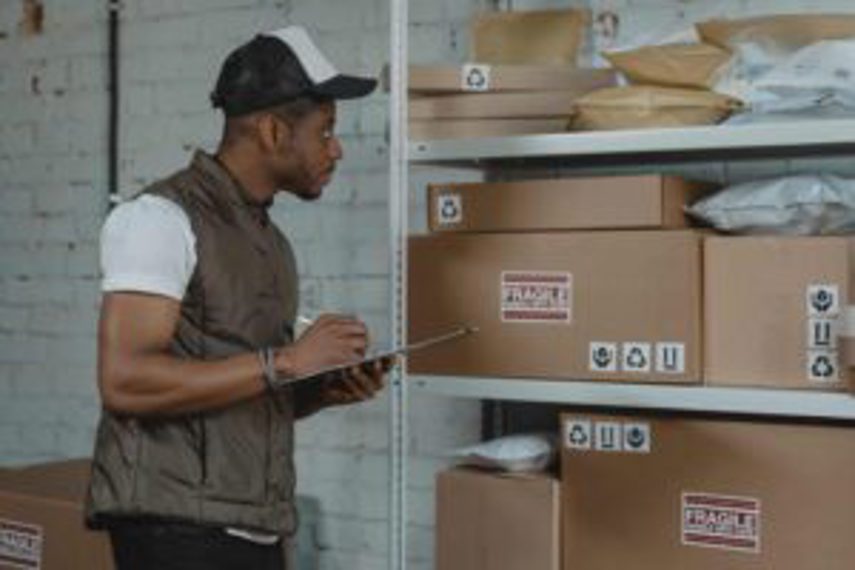
Global supply chain disruption, rapid technological evolution, changing buying and selling habits – wholesale distributors have had to deal with some rapid and radical changes over the past couple of years.
The question is: Where to from here? What’s happening in the industry right now, and what can you expect next?
Here we give you our top 10 wholesale distribution trends for 2024 and beyond.
- Learn more: Handle your wholesale orders with confidence
1. Industry economic trends and an outlook for the future
The global wholesale industry took a downturn in 2020 due to the COVID-19 pandemic and related trade and personnel restrictions – but it’s expected to grow from now to 2026. Experts predict the market value will increase from its current US$46,370.23 billion to $65,613.18 billion, with a compound annual growth rate of 9%.
This paints an optimistic outlook for the future of the industry after a tumultuous period. While we certainly don’t know what’s in store next, Covid-19 is considered a black swan event and doesn’t represent a weakness in the global economy.
That said, as we’ll see in the other trends in this report, COVID-19 has also been a transformational turning point. Organisations that cannot adapt to the ‘new normal’ may be left behind in the future of wholesale as competitors look to evolve.
 Manufacturers are increasingly looking to make sales direct to their consumers - PepsiCo, for instance, has launched its own websites to sell products directly to customers
Manufacturers are increasingly looking to make sales direct to their consumers - PepsiCo, for instance, has launched its own websites to sell products directly to customers
2. Direct-to-consumer selling cuts out wholesalers
In 2024 wholesalers are increasingly at risk of coming into competition with their own customers, as manufacturers look to sell directly to their consumers – skipping the traditional distribution model. Direct-to-consumer (D2C) sales in the US alone grew 45.5% in 2020.
Some examples of this are:
- PepsiCo, which recently launched PantryShop.com and Snacks.com to ship its products straight to people’s homes.
- Nike, which is an even better example. In 2017 it showed the world the D2C trend was coming by slashing its 30,000 retail partners down to just 40.
COVID-19 exacerbated this evolution as companies have felt major constraints in the supply chain and used digital platforms to circumvent the restrictions.
In 2022, 64% of consumers worldwide made a D2C purchase – up 15% from 2019.
Technology such as dropshipping platforms, eCommerce website builders and the rise of social commerce – that is, selling directly on social media platforms – has all made it easier for manufacturers to connect to consumers without the same burden of setting up traditional retail and logistics.
How can wholesale distributors compete with D2C?
Wholesale distributors need to create points of difference to show it is better to utilise their services than to go it alone. That means your service must be fast, cost-effective and a delight for the customer. You'll find more on this below.
3. Value-added services become vital
If wholesale distributors are increasingly in competition with their own customers, then it’s important they stand out as the better option. That means adding value wherever possible.
Some measures to think about are:
- Utilising technology to become more agile, more efficient and more accurate. D2C logistics and eCommerce can still be burdensome for manufacturers who are not well-established in these areas. Excelling in online selling and logistics may convince your customers that your service is still the most cost-effective and efficient.
- Getting clear on your service offerings. What do you do best? What problem do you solve? If your business position is no longer a given, then you must be able to establish that your services can fulfil a customer’s needs and that you are the best option at the best price for this need.
- Finding out what your customers struggle with, or what competitors don’t advertise well. You should also consider if those things could be value-adding activities for you. For example, is your inventory management more efficient, leading to quicker stock turnaround and faster fulfilment? Do you offer pre-assembly and packaging? Do you have better data and more accurate forecasts?
Find what you’re good at, and get really good at it. This may enable you to provide value far and above what a customer can achieve for themselves, putting you in a market position where you’re still valuable for your customers.
 With changes to wholesaling it's important for distributors to evaluate what problems they solve for their customers so they can prove their services are still valuable
With changes to wholesaling it's important for distributors to evaluate what problems they solve for their customers so they can prove their services are still valuable
4. B2B eCommerce will have a renewed focus on personalisation
E-commerce platforms are no longer just for B2C retailers. A survey by Gartner finds that 83% of B2B consumers prefer ordering and paying through eCommerce.
In addition, B2B e-commerce is proving more cost-effective than the better-established B2C side because it has higher conversion rates. The average B2B conversion rate via e-commerce is 10%, compared with 3% for B2C.
New research conducted by Forrester implies that personalisation is "no longer a nice-to-have but a necessity."
The traditional sales rep approach is no longer what buyers are spending most of their time on when it comes to making purchases. The reality now is that when a B2B buyer is comparing options, they will only spend 17% of their time meeting with suppliers – so each individual company gets around 5% of the customer’s time. The rest of their time is spent researching independently online and offline (45%) and on a few other smaller tasks.
"All this competition means distributors will need to double down on e-commerce and digital transformation next year."
- The Future of Commerce, 2023 Wholesale Report
This changing customer mindset around eCommerce leads directly onto our next trend...
5. B2B e-commerce platforms enable transformation
If wholesalers want to appeal to the growing B2B eCommerce market and prove their value, they’re going to need a contemporary, simple-to-use eCommerce platform.
Ease of use and providing helpful information is key for customers when it comes to eCommerce. The modern B2B buyer’s journey is complex and non-linear, and Gartner found that customers who perceived the information they received from suppliers to be helpful were three times more likely to buy a bigger deal without later regretting it.
When deciding on an eCommerce platform, it’s vital to ensure it has flexibility without being too complex. You’ll need a B2B-specific tool, since the needs of distributors are so different to typical B2C retailers – and therefore common B2C eCommerce solutions are unlikely to suit. A specialised B2B platform will help you with common buyer factors such as contract pricing, special agreements, and various payment and shipping options.
- Learn more: Unleashed’s B2B eCommerce Store
 B2B eCommerce is growing - and is predicted to continue growing - meaning that finding the right platform for your online B2B sales is key
B2B eCommerce is growing - and is predicted to continue growing - meaning that finding the right platform for your online B2B sales is key
6. Omnichannel eCommerce is the new B2B standard
To quote McKinsey: ‘B2B buyers aren’t just moving to omnichannel. They’ve arrived.’
An omnichannel experience is one that provides a seamless purchase experience regardless of platform. Whether a customer is interacting with your business via your website, their mobile, or talking directly to a sales rep, they should have the same experience and data should be shared across platforms.
What channels do B2B buyers prefer?
McKinsey’s research shows the top three most effective channels in 2021 were:
- ECommerce (47%)
- In-person (37%)
- Video (31%)
This means that wholesale distributors looking to offer a seamless omnichannel experience must not only have the technology to do so (more on this below), but sales reps must adapt themselves to this hybrid approach. New training may be required.
One thing to note: Gartner’s and McKinsey’s research appears at first sight to clash here, with Gartner saying buyers spend only 17% of their time with sales representatives, while McKinsey’s research suggests in-person sales are still effective. This could suggest one or both of the following:
- That we’re seeing a turning point in the effectiveness of sales reps, which has led to a 'depends who you ask' scenario as to whether or not sales reps are still effective.
- That even though sales reps are used less now, they still remain an effective channel for sales.
Either way, the takeaway is it’s wise to ensure you’re not reliant solely on in-person sales to future-proof your business – you might think about training your salespeople in new tools and technology so you can adapt quickly to whichever direction your customers take.
 Research suggests your salespeople are still important in the sales process, but adopting additional eCommerce methods will give you the flexibility to deal with changing customer buying behaviour
Research suggests your salespeople are still important in the sales process, but adopting additional eCommerce methods will give you the flexibility to deal with changing customer buying behaviour
7. Organisations are increasingly automated, top to bottom
The level of efficiency, accuracy and speed that modern wholesale distributors now require cannot be achieved through legacy systems. In today’s digital world automation is critical for organisations to take that next transformational step and be able to compete with D2C competitors.
- What is automation? Automation is the act of enabling certain systems – IT, physical, or both – to perform repetitive, menial tasks by themselves. Automation in conjunction with machine learning allows these tools to learn and become more efficient over time.
At its most basic, automation enables wholesale distributors to track stock levels more accurately – seeing purchase orders and logistics in real time – without tedious manual data entry.
At its more complex, it may involve technologies such as robotics to perform manual tasks independently of staff, who can then focus on other value-adding activities.
But automation requires total digital transformation
In order to successfully automate, your business will generally need a few things:
- First, to ensure its different IT systems are well-connected and share good data
- A product tracking system, to be able to track incoming and outgoing goods
- An analytics system to generate reports and forecasts, enabling evidence-based decision-making and business optimisation
- Appropriate processes and training to ensure all staff can utilise the new technology
This will usually require an investment in technology, which we’ll cover below.
8. Warehouse management software enables next-level inventory tracking
While technology is only one piece of the puzzle, if established correctly it can seriously supercharge a wholesale business.
Inventory management software is one such system growing increasingly popular among any organisations with a warehouse or warehouses to run – that is, a dedicated technology platform which helps track and optimise inventory, with features including:
- Batch and serial number tracking
- Auto assembly of kitsets and bundles
- Visibility over costs of goods sold and other financials
- Centralised supplier information
- Cloud-based infrastructure, so the software can be accessed anytime, anywhere, on any device
Learn more: Inventory Management Requirements: What It Takes To Get Set Up
 A shortage of warehousing staff has proved a challenge for many wholesalers - and has pushed up wages in this sector
A shortage of warehousing staff has proved a challenge for many wholesalers - and has pushed up wages in this sector
9. Supply chain executives share a renewed focus on reducing redundancy and resilience
2022 was a year for unwelcome supply chain disruptions and capricious lead times. Shipping delays, missing parts, and truck driver shortages had the biggest impact according to a survey by Deloitte. The old, once-reliable method of reducing costs and maximising efficiency is no longer good enough.
Shipping costs rose by 77% from January 2021 to August 2022 – a statistic largely impacted by the war in Ukraine.
Costs will still need to be reduced, and processes still optimised for efficiency. But this trending rise in disruptions means that resiliency and redundancy should be built in to reduce the risk of halted supply.
Businesses will need to introduce risk mitigation strategies to reduce the impact of supply chain problems. These could include:
- Reenforcing existing supplier relationships
- Seeking regionally diverse supplier
- Investing in inventory management software to increase supply chain visibility
10. Organisations go lean to better navigate choppy waters
The pandemic has shown that the future is not only uncertain, but unforeseen circumstances can radically change the conditions for wholesale distributors at any time. To deal with these changes cashflow is important, since capital is needed to adapt or pivot to new trends in the market.
To create more stable cashflow, going lean and cutting costs has proven to be an effective strategy for some – in other words, cutting out unnecessary expenses and streamlining operations.
So what are some common lean business practices we’re seeing?
- The use of analytical demand forecasts. These help to predict when and where you’ll require stock. This reduces the chance of stockouts or buying too much inventory that can’t be sold.
- Switching to a just-in-time (JIT) inventory model. This reduces the amount of stock taking up shelf space, meaning less cash is tied up in your stock on hand.
- Reducing IT costs to free up cash and labour tied to legacy on-premise systems. Moving to a cloud-based SaaS system is one solution. Instead of a major up-front and ongoing investment, a SaaS IT system becomes an operational expenditure – it’s basically just a software subscription.
- Tracking deadstock. This helps you get rid of items you just aren’t selling, and stop purchasing goods that you’ll struggle to distribute.
- Outsourcing activities that your business isn’t efficient at. You can team up with other specialists to access their expertise in these areas, while your in-house staff get to focus on what they do best and provide real customer value in those areas.
Learn more: The Five Elements of a Lean Business
